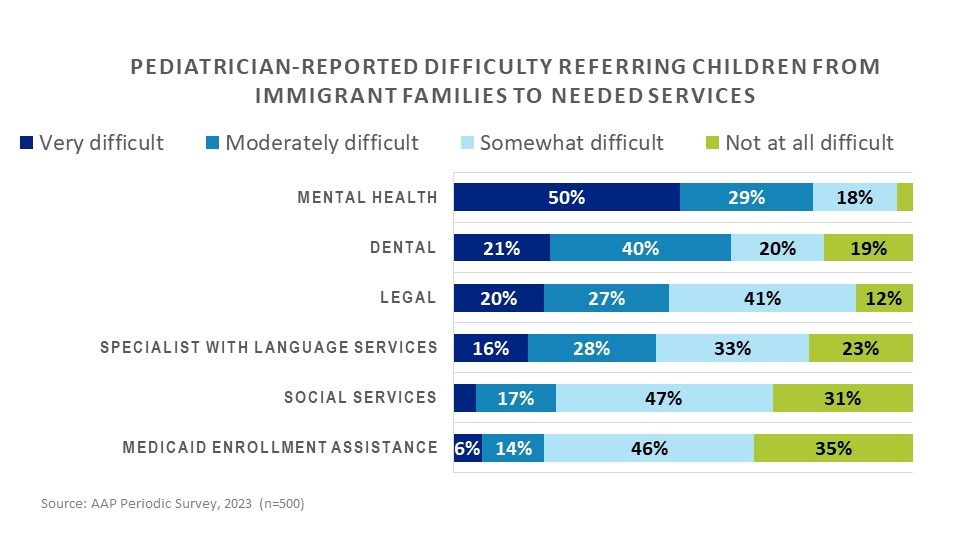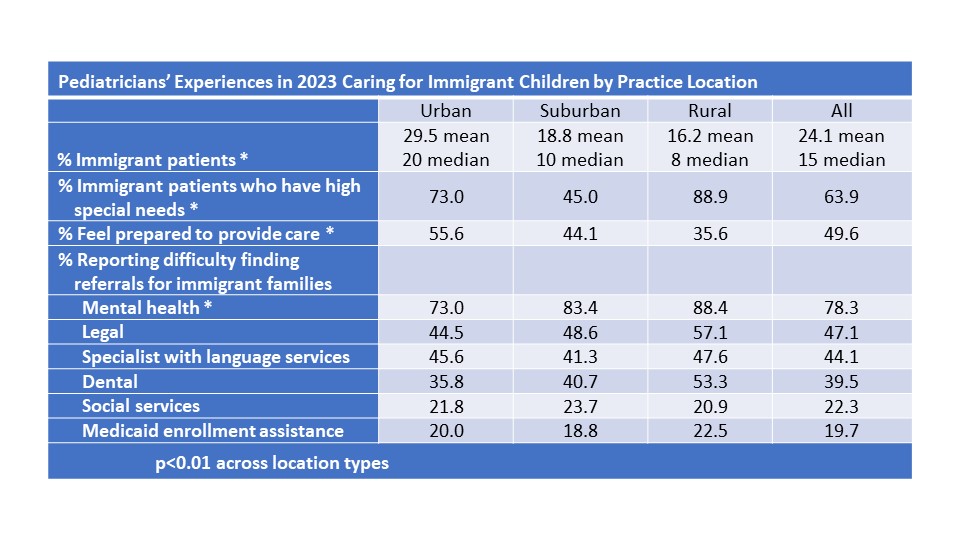Health Services Research
Session: Health Services Research 1: Workforce
291 - US Pediatricians’ Experiences Caring For Immigrant Children by Practice Location: Results From the 2023 Periodic Survey
Saturday, May 4, 2024
3:30 PM - 6:00 PM ET
Poster Number: 291
Publication Number: 291.1271
Publication Number: 291.1271
- WB
William H. Burr, PhD (he/him/his)
Pediatrician Surveys
American Academy of Pediatrics
Itasca, Illinois, United States
Presenting Author(s)
Background: Children from immigrant families make up one-quarter of US children and represent one of the fastest growing segments of the US population. Current national data on pediatricians’ experiences caring for children in immigrant families are needed.
Objective: Assess the experience of US pediatricians in caring for children in immigrant families and variation in experiences by practice location.
Design/Methods: The 2023 AAP Periodic Survey, a nationally representative survey of non-retired US AAP members (primary care and subspecialists; residents excluded), included questions on caring for children in immigrant families (response rate=33%, n=524). Pediatricians were asked to estimate: a) portion of patients who are from immigrant families (child or parent born in another country); b) portion (all/most) of immigrant patients who have special language, economic, or social needs; c) preparedness (moderately/very prepared) to care for immigrant patients; and d) difficulty of referring (moderately/very difficult) children to needed services: mental health, legal, specialists, dental, social services, Medicaid enrollment assistance. Experiences were examined by practice location (urban, suburban, rural) using ANOVA and Chi-square tests.
Results: 96% of US pediatricians care for children from immigrant families. Nationally, pediatricians report an average 24% of their patients are in immigrant families, a rate that varied by geography: 30% urban, 19% suburban, and 16% rural. Pediatricians, on average, estimate 64% of these patients have high language, economic, or social needs. While experiences are largely similar across practice location, some differences were found. Pediatricians practicing in urban areas are most likely to report feeling prepared to care for these patients. Those practicing in rural areas are most likely to report these patients have high special needs, and least likely to feel prepared to care for their patients in immigrant families. In all locations, pediatricians commonly report difficulty referring immigrant families to needed services, especially those needing mental health, with half reporting such patient referrals are very difficult and 29% reporting moderately difficult. Substantial numbers also report difficulty accessing needed dental, legal, and specialist services.
Conclusion(s): Nearly all US pediatricians, across urban, suburban, and rural practices, report their practice includes care for children in immigrant families. Many of these patients have special language, economic, or social needs, and access to needed services, especially mental health, is often difficult.


